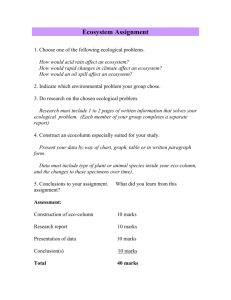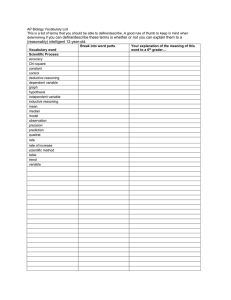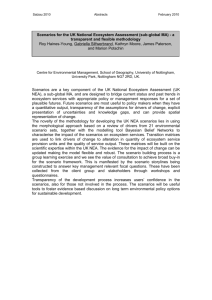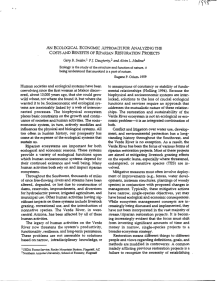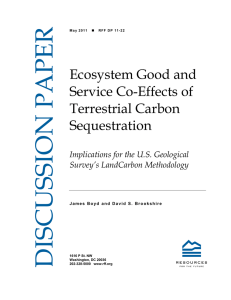Overview of the Multi-Criteria Decision Support System to evaluate
advertisement
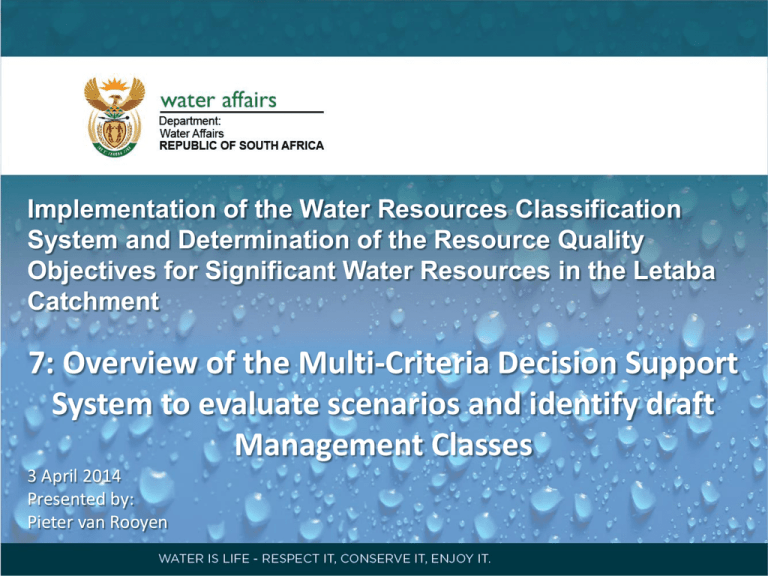
Implementation of the Water Resources Classification System and Determination of the Resource Quality Objectives for Significant Water Resources in the Letaba Catchment 7: Overview of the Multi-Criteria Decision Support System to evaluate scenarios and identify draft Management Classes 3 April 2014 Presented by: Pieter van Rooyen Letaba NWRCS steps 1: Delineate units of analysis and describe the status quo 2: Initiation of stakeholder process and catchment visioning 3: Quantify EWRs and changes in Ecosystem Services 4: Identification and evaluation of scenarios within IWRM 5: Draft Management Classes 6: Resource Quality Objectives (EcoSpecs & water quality (user)) 7: Gazette class configuration Scenario Analysis: Where does it fit in? 22 What needs to be evaluated? • Degree of the ecological health defined by Ecological Categories of biophysical nodes (nonemonetary) • Ecosystem Services (nonemonetary) • Socio-Economic implications (quantitative: monetary and nonmonetary (job count)) How is it rated? • Ecological consequences are rated according to the degree that the Recommended Ecological Category is met. (REC is the top of the scale.) • Ecosystem Services, present state is “1.0” with relative rating for scenarios. • Economic Indicator, in general GDP or other relevant comparative monitory indicator. • Employment, number of jobs as affected by scenario. • Integrated rank, weighted scores of above 4 variables – two methods of ranking. Why Multi-Criteria Analysis? • Method to compare alternatives where the outcomes (consequences) are not all quantifiable. • Ecological consequences is a relative rating while economy is in monetary terms and employment in numbers. • Multi-Criteria Analysis is appropriate in these circumstances. Integrated Assessment of Scenarios Elements Variables Water Resource System Integrated Units of Analysis River Reaches (Resource Unit) Ecological health Ecosystem Services SocioEconomic Implications Biophysical Nodes Scenario Assessment For each reach / node For IUA / system For all scenarios Relative importance Ecology Fish Food, fuel Invertebrates Weighting process Riparian vegetation Prevailing situation Services Weighting process Cultural Jobs Score Relative to present provisions Makeup of economy Economy GDP Degree of meeting REC Ecosystem Regulating Score Household Income Weighting process Relative to base condition Score Integrated Comparison (all three variables) Multi-criteria assessment method Deriving the Management Class River Reach B81A-00242 B81A-00256 B81A-00263 B81A-00270 B81B-00233 B81B-00234 B81B-00246 B81B-00251 B81B-00269 B81B-00227 B81B-00240 B81B-00247 EWR1 Total length Ecological Categories for a Selected Scenario (IUA 1) EC C D D C C C C D B D C C/D C Length (km) 21.9 5.3 5.1 20.2 3.2 7.1 14.7 3.7 6.5 11.0 10.2 12.5 25.7 147.1 Pd = 𝐷𝑙 Total length Pc = 𝐶𝑙 Total length Pb = 𝐵𝑙 Total length Pa/b = 𝐴/𝐵𝑙 Total length Management Class Criteria % EC representation at units represented by biophysical nodes in an IUA ≥ A/B 0 Class I Class II Class III Either Or Dominated by? ≥B 60 ≥C 80 ≥D 95 <D 5 A & B EC 0 70 90 10 C EC 0 80 20 D EC 100 Management Class: I, II or III Questions for clarification




